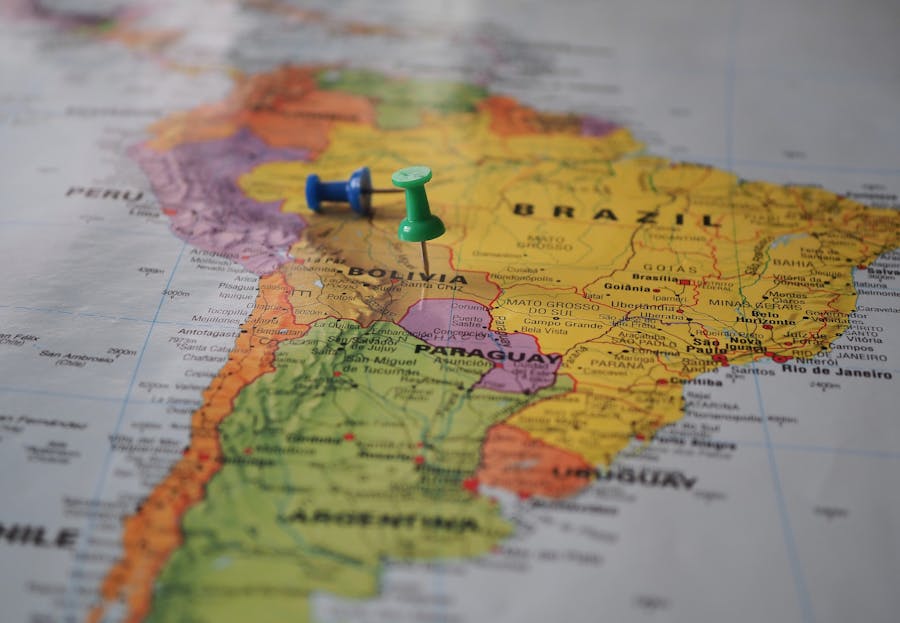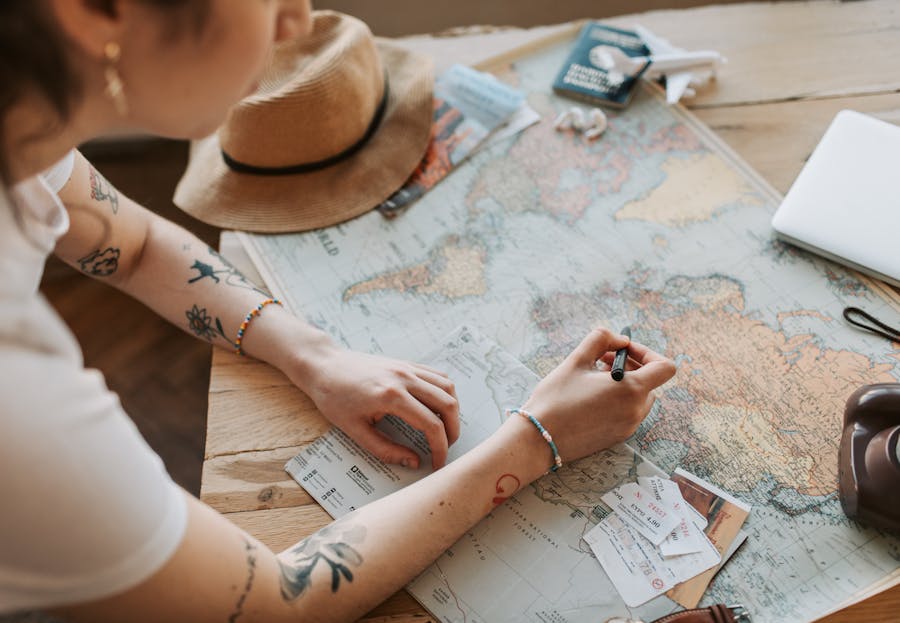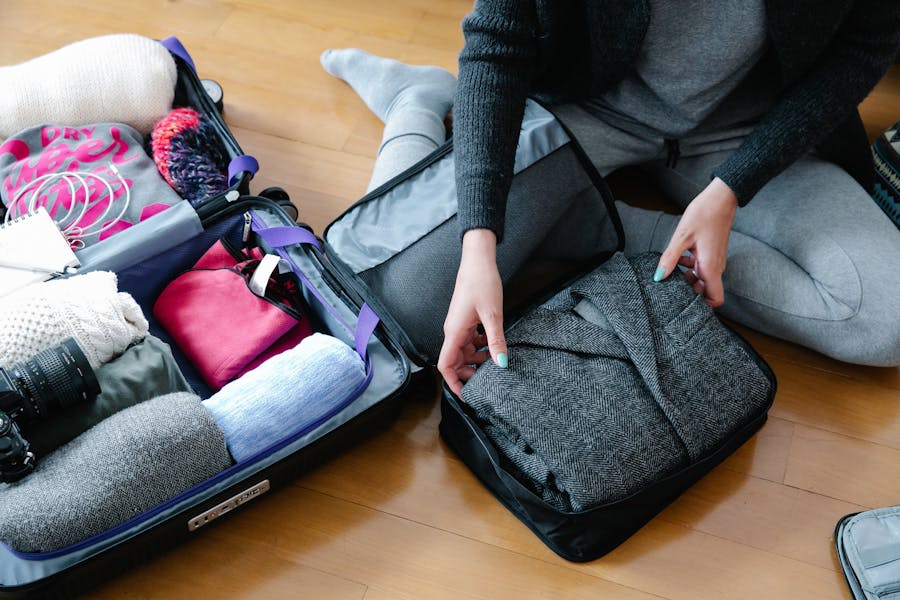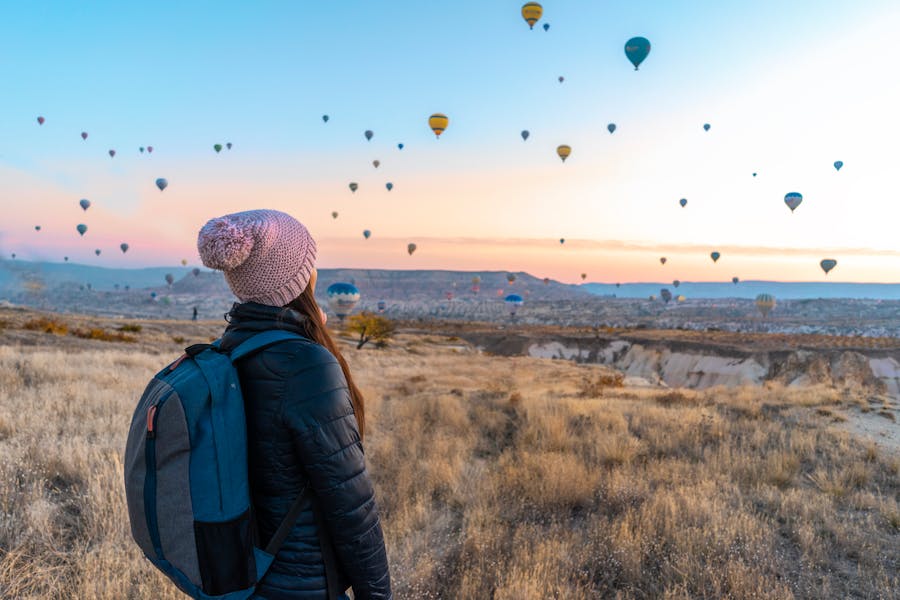Planning a road trip? It’s fun, sometimes a little overwhelming, but definitely worth it if you put in some prep. Road trips let you explore at your own pace and make memories you’ll talk about for years. All it really takes is a bit of planning before you hit the highway.
The best road trip plans start with mapping your route and setting realistic daily driving limits. I usually reach for Google Maps, but specialized planners like Roadtrippers or Furkot can make the process even smoother. You can plug in multiple stops, get a sense of driving times, and even estimate fuel costs—pretty handy, honestly.
Build in some flexibility, too! Some of the best moments happen when you spot something random and decide to check it out. Keep your plan loose enough to allow for these spontaneous detours, but still structured enough so you make it to your main destination.
Key Takeaways
- Map your route with interesting stops using tools like Roadtrippers or Google Maps.
- Set realistic daily driving limits so you don’t burn out, and leave space for unexpected finds.
- Mix careful planning with flexibility so you can enjoy those surprise adventures.
Choosing Your Destination

Picking a destination is probably the most exciting part. The perfect spot really depends on your interests, your timeline, and who’s coming along for the ride.
How to Pick the Perfect Destination
Start by thinking about what you genuinely enjoy. Love hiking? Look for places with great trails. Prefer quirky towns and funky shops? Let that guide you.
Consider the season. Some places are just better at certain times—New England in the fall for those wild colors, or the Pacific Northwest in summer for that perfect weather.
Check a few practical things, too:
- Driving distance—Is your plan realistic?
- Budget constraints—Some spots are pricier than others.
- Weather patterns—You don’t want to end up in the middle of hurricane season.
If you’re in an RV, look into campground availability and size restrictions. Popular places fill up fast, especially during peak seasons.
Ask friends for suggestions! Sometimes personal tips lead you to places you’d never find in a guidebook.
Types of Road Trips: Cross-Country, Weekend Getaways, Family Adventures
Cross-country trips are the big dream for a lot of us. You’ll want at least two or three weeks to do it right. Route 66 or a trip from Washington to Maine? Both classics.
Weekend getaways work best if you stick within three or four hours from home. Go for destinations with plenty to do in a small area so you’re not just driving the whole time. Beach towns, mountain cabins, or a national park are all solid choices.
Family adventures need a little extra planning. Look for:
- Kid-friendly attractions
- Frequent stops (every couple hours)
- Hotels with pools or play areas
National parks are great for families, with ranger programs just for kids. Or try a theme, like visiting historical sites or following a famous trail.
Mapping Out Your Road Trip Route

Planning the route is honestly one of the most fun parts. A good map means more fun, less stress, and fewer wasted hours.
Using Route Planners and Navigation Tools
Most people stick with Google Maps for navigation—it’s reliable and gives real-time traffic. But if you want more, Furkot and Roadtrippers let you plot out multi-stop journeys and estimate drive times.
Personally, I like Furkot because you can set your daily driving limit. No more exhausting 12-hour days that leave you wiped out. Just click your stops, and it figures out the rest.
AAA’s trip planner is another solid choice, especially if you’ve got a long, complicated route. It handles up to 25 stops in one go. These tools also estimate fuel costs, which is super helpful.
Download offline maps before you hit any remote stretches. You never know when you’ll lose service.
Deciding on Stops and Things to Do
The real magic of a road trip is finding those unexpected spots. Apps like Roadtrippers are great for suggesting roadside attractions, diners, and quirky gems.
When you’re planning stops, balance:
- Practical needs: gas, rest, sleep
- Food: local spots, markets, food trucks
- Attractions: museums, parks, weird roadside stuff
I usually pick a few must-sees ahead of time, but I always leave space for random discoveries. Some of my best stories come from last-minute detours after seeing something on a billboard.
Give yourself buffer time. There’s nothing worse than rushing and missing something awesome because you’re glued to a schedule.
Exploring Scenic Routes
The fastest way isn’t always the best. Scenic byways can turn a regular drive into something you’ll remember forever. That extra hour? Usually worth it.
Check out routes like America’s Byways or Blue Ridge Parkway. These roads are protected for a reason—they’re gorgeous.
Keep seasons in mind. Fall foliage transforms mountain roads, and deserts explode with wildflowers in spring.
Weather can mess with your plans. Some mountain passes stay closed late into spring. I’ve had to reroute a trip because I didn’t check and a pass was still snowed in!
Look up viewpoints and pullouts ahead of time. They make for perfect photo ops or just a chance to soak in the view. Sometimes the journey is just as good as the destination.
Creating a Road Trip Itinerary

A good itinerary keeps your trip smooth and (mostly) stress-free. You don’t need to schedule every minute, but having a plan helps.
Estimating Distances and Travel Time
Start with Google Maps or Roadtrippers to figure out distances and drive times. The shortest route isn’t always the most fun, so keep that in mind.
Try to cap daily driving at 6-8 hours. You’ll get tired faster than you expect. Add in buffer time for:
- Rest stops (every couple hours)
- Meals (give yourself a real break)
- Gas
- Traffic or construction delays
Road conditions matter, too. Highways are faster, but winding mountain roads or city traffic can slow you down a lot.
Maximizing Your Time on the Road
Mix up your days with:
- Planned destinations—the can’t-miss stuff.
- Flexible stops—those cool places you spot on the fly.
- Free time—just to wander or chill.
Don’t overpack your schedule. Leave some afternoons or even whole days open. That’s when the real adventures happen.
Apps like Furkot or myscenicdrives.com can help you find hidden gems. I love stumbling onto oddball attractions or scenic overlooks that aren’t in any guidebook.
Alternate packed days with lighter ones so you don’t burn out. Trust me, you’ll appreciate it.
Setting Your Budget

Before you leave, figure out your budget so you’re not stressing about money the whole time. A little planning goes a long way here.
Calculating Your Road Trip Costs
Map your route and add about 100 miles for detours (because, let’s be honest, you’ll take some). Check your car’s gas mileage and look up current prices to estimate fuel costs.
Lodging is a biggie. Research hotels, motels, campgrounds, or Airbnbs where you’ll be stopping. Booking ahead usually gets you better rates.
Food sneaks up on you! Budget around $30 per person per day, but you can save by packing snacks or planning picnics.
Don’t forget:
- Attraction tickets
- Parking fees
- Souvenirs (you know you’ll buy something)
- Emergency fund (I’d say at least 15% of your total)
- Tolls
- Vehicle check-up before you go
Money-Saving Tips for Travelers
Traveling off-peak or during shoulder seasons can save you a bundle. Places are cheaper and less crowded just before or after summer.
Pick destinations closer to home if you want to save on gas and maximize your time away. Sometimes the best trips are right in your backyard.
Pack a cooler with snacks and drinks so you’re not stuck paying convenience store prices. Make breakfast where you’re staying instead of eating out every day.
Look for free activities—museums often have free days, and hiking trails or beaches are usually free.
Use apps like GasBuddy to find cheap gas. Hotel rewards programs and credit card points can help cut lodging costs, too.
Selecting the Right Vehicle

Your car can make or break your trip. Comfort, reliability, and matching your route—those are the big factors.
Choosing Between Your Car and a Rental Car
Taking your own car? You already know its quirks, and there’s no rental fee. But be honest—will it be comfortable for long drives? That tiny sedan might feel cramped after a few hours.
Rentals offer flexibility and peace of mind. They’re usually newer, more fuel-efficient, and have better safety features. Heading off-road? Rent a 4WD and save your own car the trouble.
The cost can go either way. Rentals have daily fees, but if your car is a gas guzzler or not super reliable, renting might actually save you money. Unlimited mileage is great for long trips.
Preparing Your Vehicle for the Trip
Whatever you drive, get it checked out a couple weeks before you leave. That way, you have time to fix anything that comes up.
Check these:
- Tires: Inflation and tread
- Fluids: Oil, coolant, brakes, washer fluid
- Brakes: Make sure they work and don’t sound weird
- Lights: Headlights, brake lights, turn signals
- Battery: Test it if it’s over three years old
Pack an emergency kit—jumper cables, flashlight, basic tools, first-aid kit. I always add bottled water and snacks, just in case.
If you rent, take a minute to learn the controls before you drive off. Trust me, figuring out the headlights at night isn’t fun.
Where to Stay: Accommodation Options

Where you sleep matters more than you’d think. You’ve got options, from hotels to campgrounds, and plenty of ways to save if you plan ahead.
Hotels and Motels for Road Trippers
Chains like Super 8, Motel 6, Days Inn, and Sleep Inn are budget-friendly and usually right off the highway. They’re great for quick stops, with perks like free WiFi and breakfast.
I usually check Google Maps for hotels along my route. Sometimes booking directly on a hotel’s website gets you a better deal than third-party sites.
If you’re winging it, apps like Vacation Rentals can help you find a last-minute place. Always check reviews before booking, though.
Alternative lodging like university dorms (in summer) or hostels can save money, especially in pricey cities.
Camping Along the Way
Camping is a budget-friendly way to get closer to nature. National and state parks have beautiful sites with basic amenities. Some even have showers, which is a game changer on a long trip.
Book ahead, especially in peak season. Campgrounds fill up fast! Apps like Reserve America or Recreation.gov make it easy.
If you want a little more comfort, try cabins or yurts at campgrounds. You’ll get a bed and shelter but still have that outdoorsy vibe.
Don’t forget the essentials: a solid tent, sleeping bags, and cooking gear if you’re camping a lot. And always follow the campground rules about fires and food storage.
Memberships for Travel Discounts
Sign up for hotel loyalty programs like Choice Privileges, Wyndham Rewards, or Marriott Bonvoy. You’ll rack up points for discounts and maybe even a free night.
AAA membership isn’t just for breakdowns. You can get 10-15% off at thousands of hotels. It pays for itself after a couple nights.
Warehouse clubs like Costco and Sam’s Club sometimes have discounted hotel rates. Worth checking before you book.
If you camp a lot, an America the Beautiful pass ($80) gets you into national parks and can save on camping fees. KOA’s membership gives 10% off at their campgrounds, too.
What to Pack: Road Trip Essentials

Packing smart makes a huge difference. The right gear keeps you comfy, ready for emergencies, and well-fed on the road.
Road Trip Packing List Must-Haves
Let’s start with your car—make sure it’s road-ready. Toss in a spare tire, jumper cables, and a few basic tools in case something goes sideways. You’ll need your driver’s license, registration, and insurance too, so don’t leave those behind!
When it comes to navigation, don’t put all your eggs in one basket. Download Google Maps for offline use, but seriously, stash a paper map somewhere for those dead-zone moments.
Car chargers are a must. Bring a couple of extras—someone always forgets theirs. Don’t skimp on a first aid kit either: bandages, painkillers, and your own meds should ride shotgun.
Long drives can get messy fast, so grab some hand sanitizer, wet wipes, and trash bags. You’ll thank yourself after a few snack breaks.
The weather’s a wildcard. Sunglasses, sunscreen, and maybe a hat will help on sunny days. A small umbrella barely takes up any space, and it can be a lifesaver if you get caught in the rain.
Snacks and Meals on the Go
Hunger can ruin the vibe in no time. Pack a cooler with ice packs for sandwiches, yogurt, and fruit. Keep a separate stash for non-perishables like nuts, granola bars, and dried fruit.
Hydration matters more than you think. I always bring a reusable water bottle and top it off whenever possible. Electrolyte drinks? Not a bad idea for those extra hot days.
If you’re a coffee person, consider a portable setup. A thermos and some instant coffee packets can save you from overpriced gas station brews.
Napkins, utensils, and a small cutting board make simple meals way easier. Baby wipes are a lifesaver for sticky fingers, especially after those snack attacks.
Mix up your snacks—treats are fun, but your body will appreciate some healthier stuff after hours on the road.
Gear and Comfort Items
Comfort makes all the difference. Toss in pillows and blankets so passengers can nap or just stay cozy. I never skip my neck pillow—car naps are rough otherwise.
Entertainment keeps everyone sane. Download music, podcasts, audiobooks, and pack some games that don’t need Wi-Fi. A deck of cards or a travel-sized board game can save a dull rest stop.
For overnights, bring the basics: toothbrush, toothpaste, deodorant, and a shampoo bar (trust me, less mess than liquid). Hair ties and travel-sized stuff help save space.
Weather changes fast, so pack layers and comfy shoes. You’ll want options when temps swing from chilly to blazing in one day.
A flashlight or headlamp comes in handy more often than you’d think. Always stash a roll of toilet paper, too—you’ll be glad you did at that sketchy rest stop.
Staying Safe and Insured

Put safety at the top of your list. Having the right insurance can really save you from a world of trouble.
Travel Insurance for Road Trips
Before you hit the road, think about travel insurance for your journey. It’s not just for international trips! Travel insurance can cover all sorts of mishaps—trip cancellations, medical emergencies, even towing if your regular car insurance skips that.
Check if your policy includes roadside assistance. If it doesn’t, add it. Getting stuck with a flat or dead battery in the middle of nowhere is no fun.
Look for coverage that helps with lodging and meals if weather or breakdowns delay you. Some plans even reimburse you for unused hotel nights if you have to turn back early.
Double-check your health insurance for out-of-state coverage. If it falls short, travel insurance often fills in the gaps.
Keep copies of your insurance info, both digital and paper. Save the roadside assistance number in your phone and stick a backup somewhere in the car.
Fun and Entertainment on the Road

Long drives can drag if you’re not prepared. With a little creativity, the journey itself can become the highlight—sometimes even more fun than the destination.
Road Trip Games for All Ages
Classic games like “I Spy” and “20 Questions” never get old. They’re easy, require zero prep, and somehow keep everyone occupied for way longer than you’d expect. If you’re feeling competitive, try spotting license plates from every state.
Word association games are great for passing the time and keeping your brain busy. One person says a word, someone else fires back with the first thing that pops into their head.
Travel-sized board games or cards are perfect for rest stops. Some magnetic versions won’t go flying when you hit a pothole.
Download a few podcasts or audiobooks before you go. A good story or a deep-dive discussion can make those miles disappear, and you might even learn something cool about your next stop.
Tips for a Memorable Journey
Stop often—stretch, explore, and check out those weird roadside attractions. You never know, the world’s biggest ball of twine could be the highlight of your trip.
Make a playlist together. Let everyone add their favorite songs. Music sets the mood and turns into the unofficial soundtrack for your memories.
Snap photos or jot down notes in a travel journal. Challenge yourself to find something interesting at every stop, not just the obvious tourist spots.
Don’t skimp on snacks and drinks. A hangry car is a grumpy car. Try to pack a mix of healthy stuff and a few treats for morale.
Plan a surprise or two—a detour to a famous ice cream shop, or a scenic overlook nobody saw coming. Those little surprises often turn into the best stories.
Frequently Asked Questions
There’s a lot to figure out before you hit the road—routes, stops, daily mileage, and finding cool places along the way. Here are some questions I get all the time.
What are the best resources for plotting a route with multiple stops?
Google Maps is my go-to for planning routes with several stops. You can add up to 10 destinations, and it’ll handle the route for you.
Roadtrippers is another great pick, especially if you want to discover interesting detours. It’s built for road trippers, so it suggests cool stops along your path.
If your trip is extra complicated, RoadTrippers Plus unlocks unlimited waypoints and offline maps. It’s a paid upgrade, but sometimes it’s worth it.
Can you suggest any top-rated tools for creating a detailed itinerary for my road trip?
TripIt does a fantastic job organizing all your travel details. Just forward your confirmation emails and it builds your itinerary for you.
I really like Wanderlog for planning with friends. You can create daily schedules and share them with everyone in your group.
Old-school planners—don’t overlook a spreadsheet. Set up columns for dates, destinations, activities, and where you’re sleeping. It keeps everything in one place.
How can I determine the optimal number of miles to travel daily during a long road trip?
Most folks agree that 300-400 miles a day (about 5-7 hours of driving) hits the sweet spot. It leaves you enough time to enjoy stops without burning out.
Of course, you know your own limits. Some people love marathon drives; others are done after a few hours. Listen to your body.
Try to schedule shorter drives at the start and end of your trip. You’ll be excited at first and probably wiped out at the end.
Are there any trustworthy free applications available for planning a road trip?
Google Maps is hard to beat for free navigation, live traffic, and route planning.
Waze is great for real-time, crowd-sourced traffic and road hazard alerts.
Maps.me lets you download detailed offline maps—super handy when you’re off the grid and cell service disappears.
What strategies can I use to find interesting and worthwhile stops along my route?
Atlas Obscura is my favorite for finding oddball and lesser-known attractions. You’ll discover stuff most tourists never see.
Check out local tourism board websites for events and hidden gems that don’t show up on big travel sites.
I like to ask around on social media or Reddit’s road trip forums. Other travelers always have great tips for spots you’d never find on your own.
Could you recommend any websites that specialize in helping travelers devise road trip plans?
Roadtrippers.com focuses on making road trip planning easier. You’ll find attractions, natural wonders, and even those oddball roadside stops right along your route.
If you’re heading out in an RV or just want to camp, The Dyrt can help you discover campgrounds and overnight parking spots.
Furkot packs in some pretty handy trip planning tools. You can build day-by-day itineraries, check sunrise and sunset times, and look up places to stay—all in one spot.

Leave a Reply